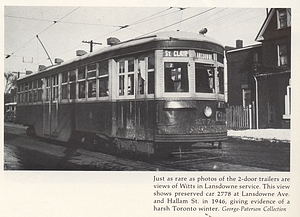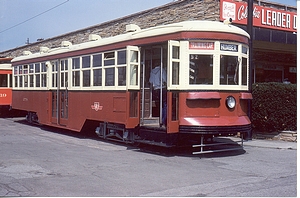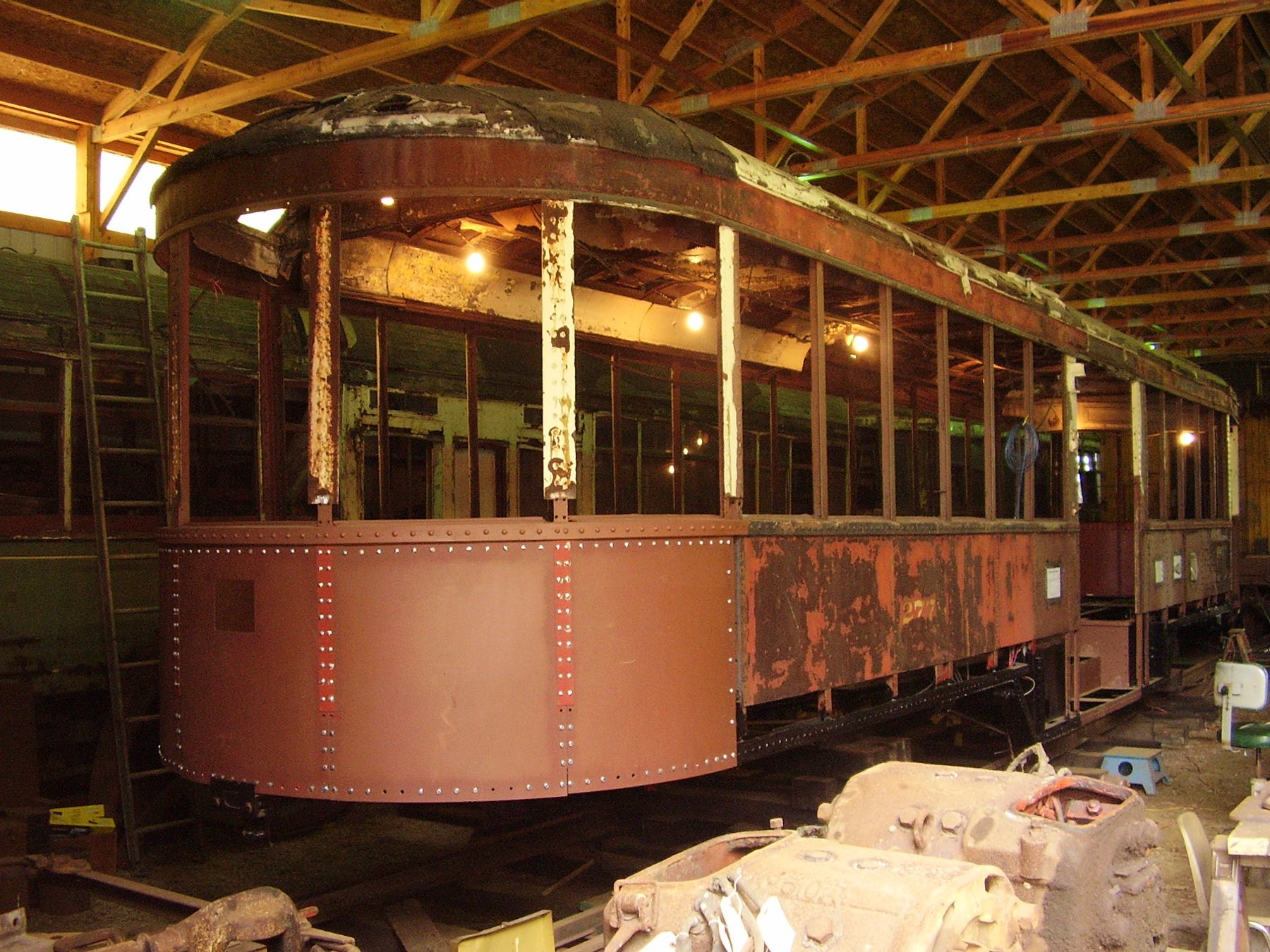|
Peter Witt and his Streetcar
Appointed Cleveland's Street Railroad Commissioner in 1912 by newly elected mayor Newton D. Baker, Peter Witt's challenge was to develop a transit vehicle that would reduce the time needed for loading and unloading while also improving the efficiency of fare collection. In 1911 the Philadelphia Rapid Transit Company introduced the "Nearside" car design which allowed entrance to the cars from the curb (or near) side of the car, eliminating the need for the traffic obstructing and often dangerous "safety islands" in the middle of the streets required by many older car configurations.
The Cleveland Railway Company's center-door streetcars were of the Nearside type and Witt, perhaps inspired by the Philadelphia cars, selected CRC car #33 for conversion to his prototype. To improve the speed of loading he added a large entrance doorway at the front by the motorman. Patrons riding the line for more than a stop or two could then ride in the front of the car (where most of the seats were) or they could pass through to the rear (configured for maximum standing room). The Conductor's station was relocated to just ahead of the center doors. Riders would then pay as they passed the fare box to get to the exit. This "Pay As You Pass" system eliminated time formerly lost at stops collecting each fare under the old "Pay As You Enter" system.
The car was introduced to the public as "The Car Rider's Car" in the Spring of 1915. The double center doors of the converted car were replaced by a single large doorway on later cars of this type. These innovations improved the ability of public transit to better serve the masses by reducing both ride times and traffic congestion. The car exceeded even Mitten's innovations and thousands were built for use all over the world. A commission of $50.00 per car was paid to Witt by other transit systems that used his design, including 1920's era cars built for Philadelphia, Toronto and many more where they were known as "Peter Witt" cars.
Toronto Transportation Commission Peter Witt Car #2778 was built by the Canadian Car & Foundry Company in 1923. One of the line's "short" class P-1 cars, it is meant to operate without a trailer. The car served Toronto, Ontario until its retirement in 1964. Mechanically and aesthetically this car is very similar to contemporary Peter Witt cars built and operated in Cleveland. Because no Cleveland Witt cars have survived, this car is as close as we can come to documenting this vital step in Cleveland's transit history.
|
Streetcar #2778 Specifications
|
|
Type:
Electric Street Car
|
|
Description:
Single End, Double Truck, Arch Roof, Peter Witt Car
|
|
Builder:
Canadian Car and Foundry Company, Montreal, Canada
|
|
Year Built:
1923
|
Retired:
1963
|
|
Acquired by NORM:
1969
|
|
Dimensions:
Length: 47ft., Width: 8ft. 4in., Height: 10ft. 11in.
|
|
Weight:
39,700 lbs.
|
Seats:
52
|
|
Controls:
WH K35XA
|
|
Trucks:
CC&F 177
|
Motors:
4 WH 510A, 35 HP
|
|
Brakes:
WAB SME
|
Compressor:
DH 16
|
|
Lines Served On:
Toronto Transportation Commission
|
|
Status:
Restorable Car / Under Restoration
|
Photos

This newspaper photo shows #2778 in service in 1946.
(Museum Collection)

Here is the car in front of the Depot at Trolleyville in 1975.
(Museum Collection)

This July 2009 photo shows the car undergoing a complete restoration in the Bennett Carhouse at NORM.
(B.C. Gage Photo)
|